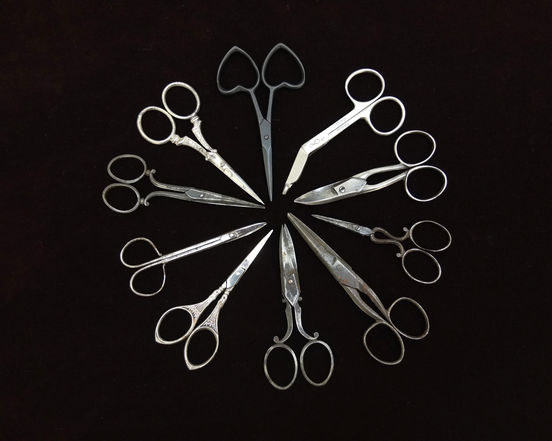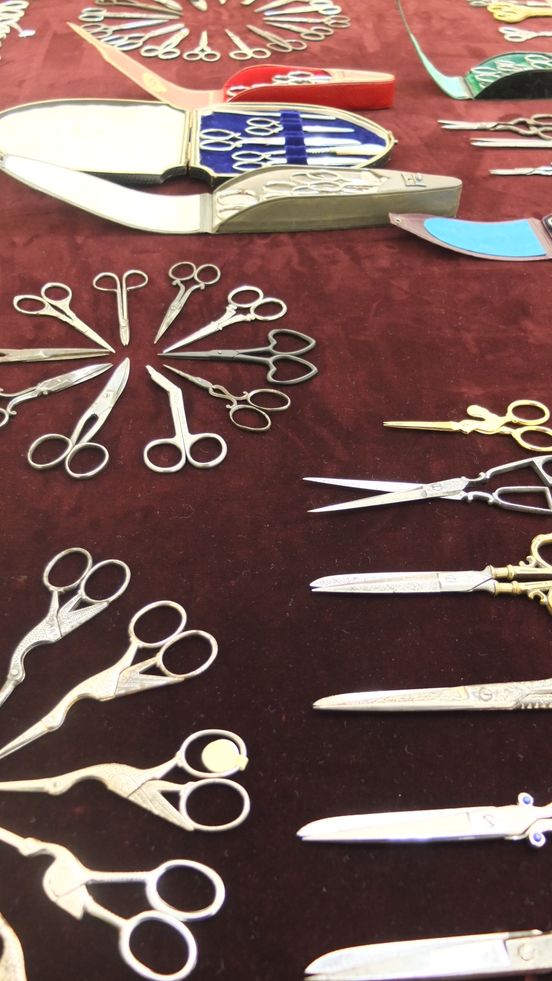Collector Yvonne Marsh estimates that she possesses about 3000 pairs of scissors. Her collecting has been encouraged by her parents, a husband who collected bladed instruments – knives and swords – and a passion for embroidery, which fuels her other principal collecting interest, the tools and instruments associated with needlework.
Her interest and collection began within her family which had a strong interest, and proficiency, in needlework and dressmaking. Her father, an Auckland leather-goods manufacturer, assembled a small collection of scissors which was to become the nucleus of her own collection. After excelling at dressmaking her parents presented her with her own pair scissors, a pair of left-handed scissors. Much later a talk about scissors at an embroiders’ guild meeting rekindled her interest and having the time to devote to collecting, and with the encouragement and companionship of her husband, a collection began to be actively formed. Examples were acquired locally at antique and collectors’ fairs which enabled dealers to get to know of her scissor interest. Scissors provided a focus on travels overseas and a means of engaging with local cultures. A trip to Turkey provided the opportunity to acquire a number of antique Turkish carpet scissors. In France she acquired her oldest pair, Medieval era shear type scissors.
Scissors come in two main types, cross-blades secured by a central pin and double-bladed spring- action scissors, which are usually called shears. Pivoted cross bladed scissors were known to the Romans while shears were known 2000 years before that. Irrespective of type the elements of scissors are bows, (or handles) shanks, (that connect bow and blades) and blades.
The basic design of scissors dates back to the sixteenth century and it was during the eighteenth century that steel scissors were first made. Steel scissors made in England at Sheffield, already famous as a centre for cutlery making, were prized and expensive, because they were handmade. Making steel scissors involved about 150 different steps within nine major processes: forging, boring, hardening, shaping, grinding, filing shanks and bows, assembling, polishing and burnishing.
Steel scissors remained relatively expensive, and therefore not widespread, until the advent of mechanised forging in the late nineteenth when Germany became the leading exporter of affordable and reliable scissors. While mechanisation led to an overall reduction in the variety of styles it did provide an opportunity for manufacturers to reflect the fashions and trends of the day within their designs.
Scissors have sometimes been considered as symbols of terror and violence historically they have been the emblem of the divine midwife and therefore are symbols of creation and transformation.

